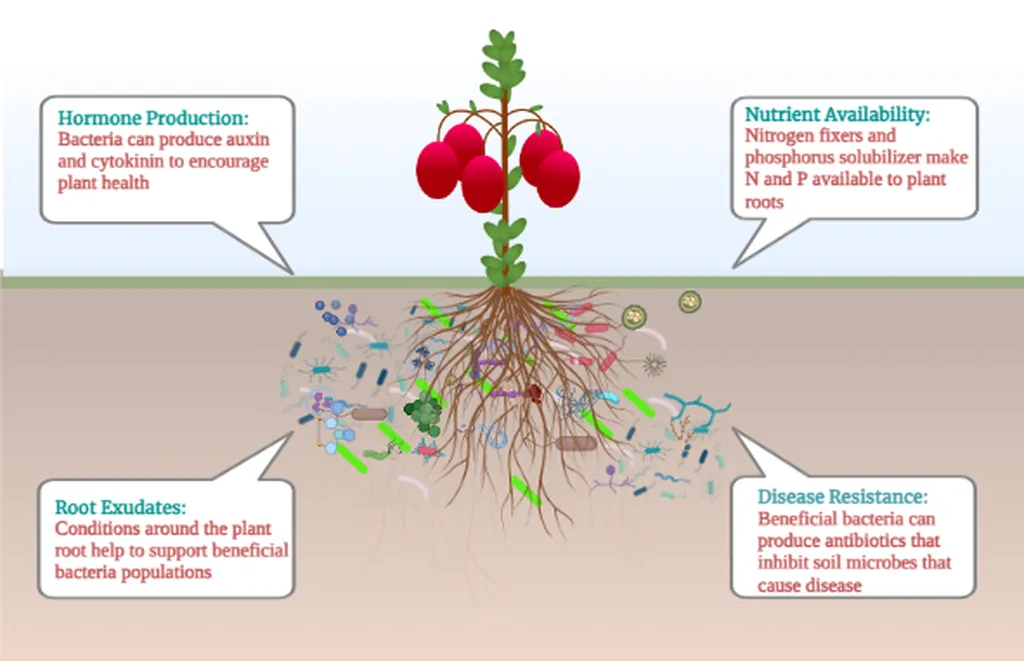In the heart of agricultural innovation, a groundbreaking study is reshaping our understanding of how to tackle one of the most pressing environmental challenges: antibiotic pollution in soils. Led by Oluwaseyi Samuel Olanrewaju, this research, published in *Frontiers in Microbiology* (which translates to “Frontiers in Microbiology” in English), delves into the intricate world of beneficial bacteria and their potential to remediate antibiotic-contaminated agricultural soils. The findings could have profound implications for food security, sustainable agriculture, and even the energy sector.
Antibiotics, while vital for human and animal health, have become a double-edged sword. Their widespread use in agriculture, through manure application and wastewater irrigation, has led to contamination of soils, posing significant threats to food security and public health. The persistence of antibiotic-resistant genes in these soils can alter microbial communities, promote horizontal gene transfer, and ultimately impact plant and human health.
Olanrewaju’s research highlights the critical role of soil properties such as pH, organic matter content, and texture in influencing the bioavailability of antibiotics. “Understanding these properties is crucial because they dictate how antibiotics behave in the soil and how effectively beneficial bacteria can degrade them,” Olanrewaju explains. This knowledge is pivotal for developing targeted bioremediation strategies that can be integrated into agricultural practices.
The study emphasizes the bioremediation potential of beneficial bacteria, which employ mechanisms like enzymatic biodegradation, biosorption, biofilm formation, and the formation of synergistic microbial consortia. These bacteria can utilize antibiotics as nutrient sources, effectively cleaning up contaminated soils. “The beauty of this approach lies in its natural synergy. By harnessing the power of beneficial bacteria, we can create a sustainable cycle that not only cleans the soil but also enhances its fertility,” Olanrewaju adds.
However, the journey from lab to field is fraught with challenges. The research critically discusses regulatory, technological, and scalability hurdles. Integrating gene editing and systems biology approaches under a One Health framework is proposed as a way forward. This holistic approach considers the interconnectedness of human, animal, and environmental health, ensuring that bioremediation strategies are both effective and safe.
For the energy sector, the implications are significant. Sustainable agriculture practices are increasingly intertwined with energy production, particularly in bioenergy crops. Cleaner soils mean healthier crops, which can be used to produce biofuels more efficiently. Additionally, the insights gained from this research could inform the development of microbial technologies for other environmental remediation efforts, such as cleaning up oil spills or treating wastewater.
As we stand on the brink of a new era in agricultural and environmental science, Olanrewaju’s research offers a beacon of hope. By synthesizing molecular insights with environmental and policy considerations, it provides a comprehensive roadmap for mitigating the ecological and health risks associated with antibiotic pollution. The future of bioremediation is not just about cleaning up; it’s about creating a healthier, more sustainable world.
In the words of Olanrewaju, “This is not just about solving a problem; it’s about reimagining our relationship with the environment. By working with nature, we can achieve solutions that are both effective and enduring.” As we move forward, the integration of beneficial bacteria into agricultural practices could very well become a cornerstone of sustainable farming and energy production.

